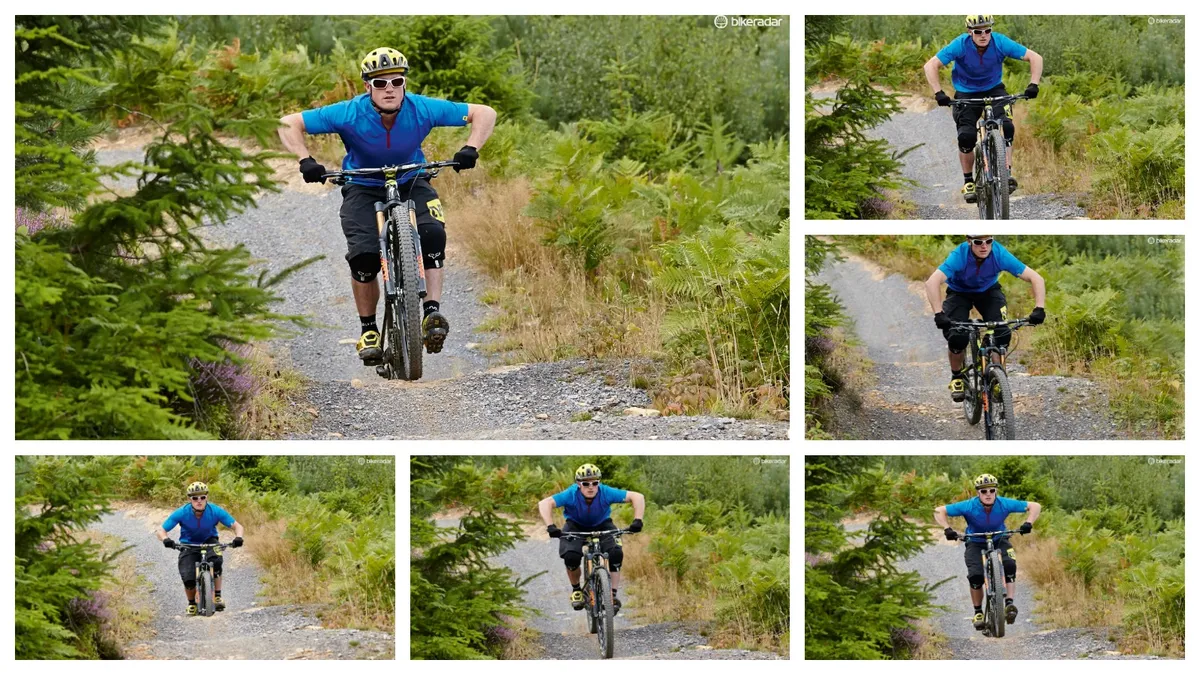Pump bumps are small rollers that can be a single lump or a series of undulations. What makes them different from jumps is that they’re generally on sections of trail that are quite slow, so it’s better to pump them to gain speed rather than try to jump them.
- How to bunny hop, in 5 simple steps
- Learn how to wheelie, with Anna Glowinski
- How to ride drop-offs with confidence
Pumping is a way of generating speed from the trail without pedalling. It’s a simple concept – apply pressure to a downslope and you’ll gain forward momentum. At steady speeds you can pump small bumps with both wheels on the ground, but at faster speeds it can be better to let the front wheel come off the ground (a move known as a ‘manual’) and pump with the rear wheel only.
1. Approach the bumps with control
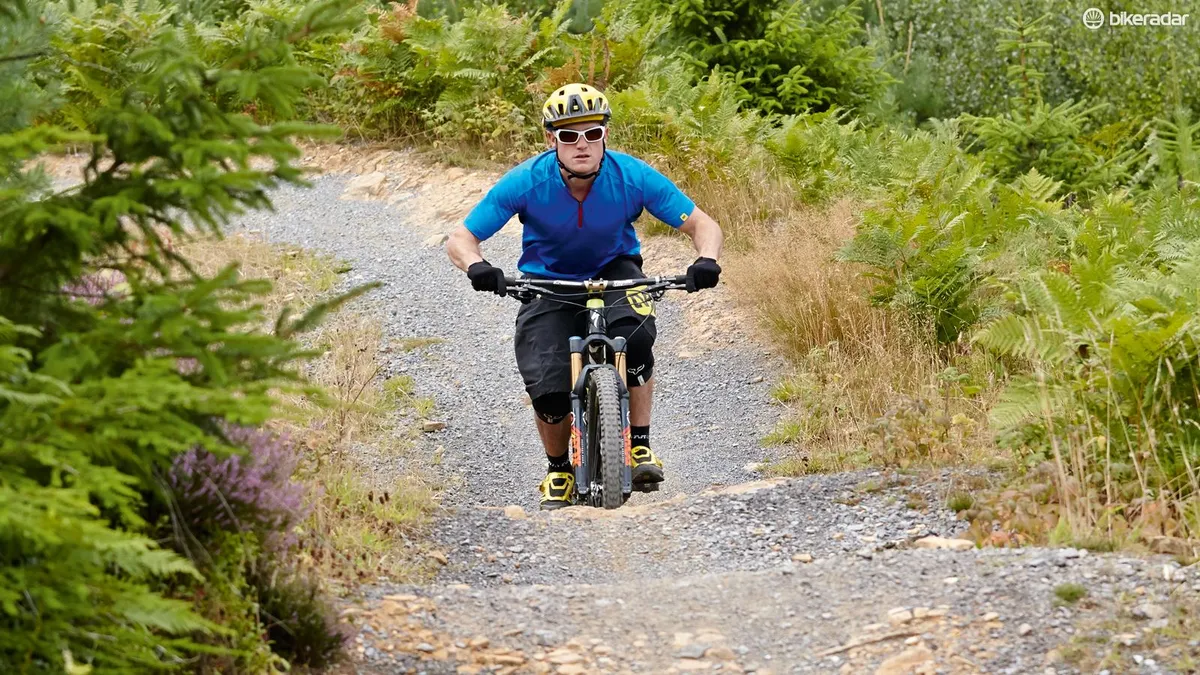
You should be in your neutral position, with your weight through your feet and your hands light. A bit of speed will help, but keep it under control. Look at the upslope so you can work out your timing.
2. Absorb the upward movement
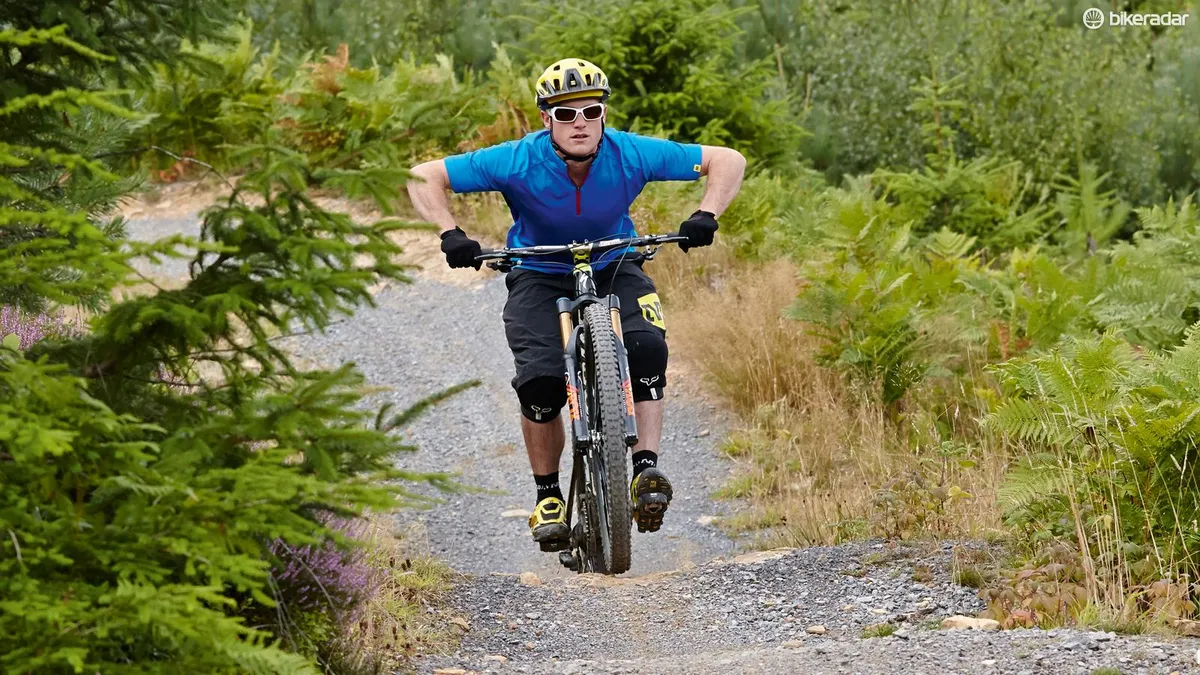
Just before the front wheel hits the upslope, compress the bike into the ground and bend your arms and legs so the bike can change angle and is light on the upslope – try to absorb the upward movement of the bike with your body.
3. Pump with your legs
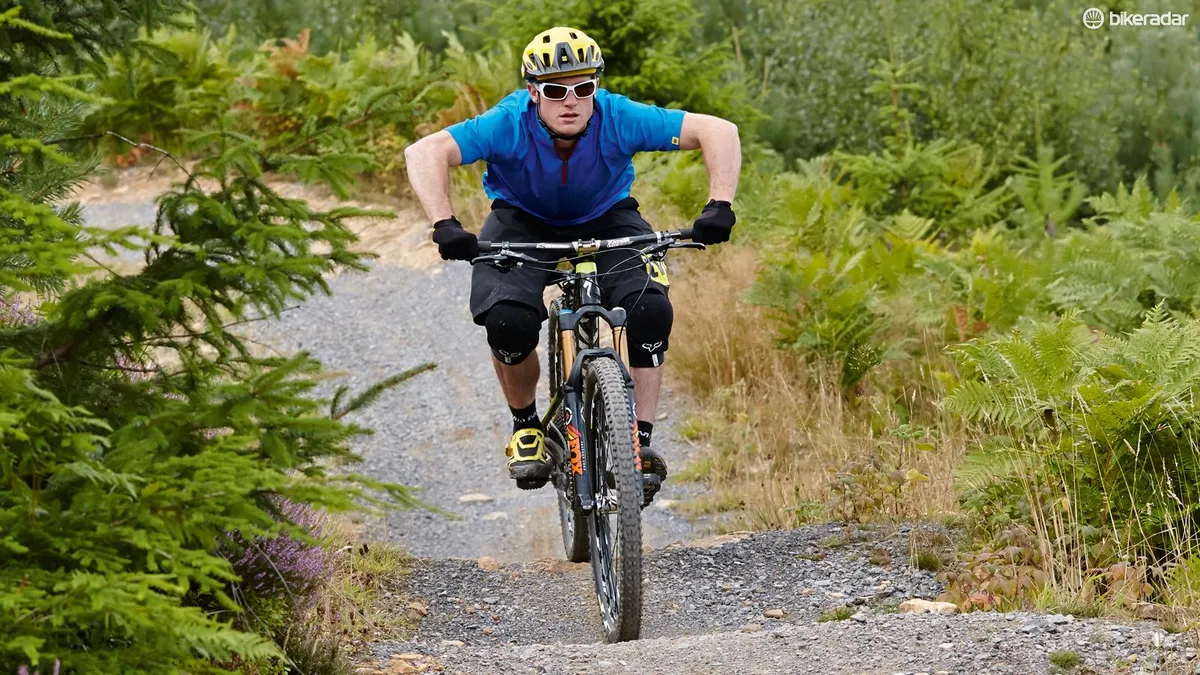
You’ll now be in a compressed position on top of the first bump. Just as your rear wheel clears the upslope, push down with your legs to accelerate through the downslope. Timing is essential here.
4. Absorb the upslope of the next bump
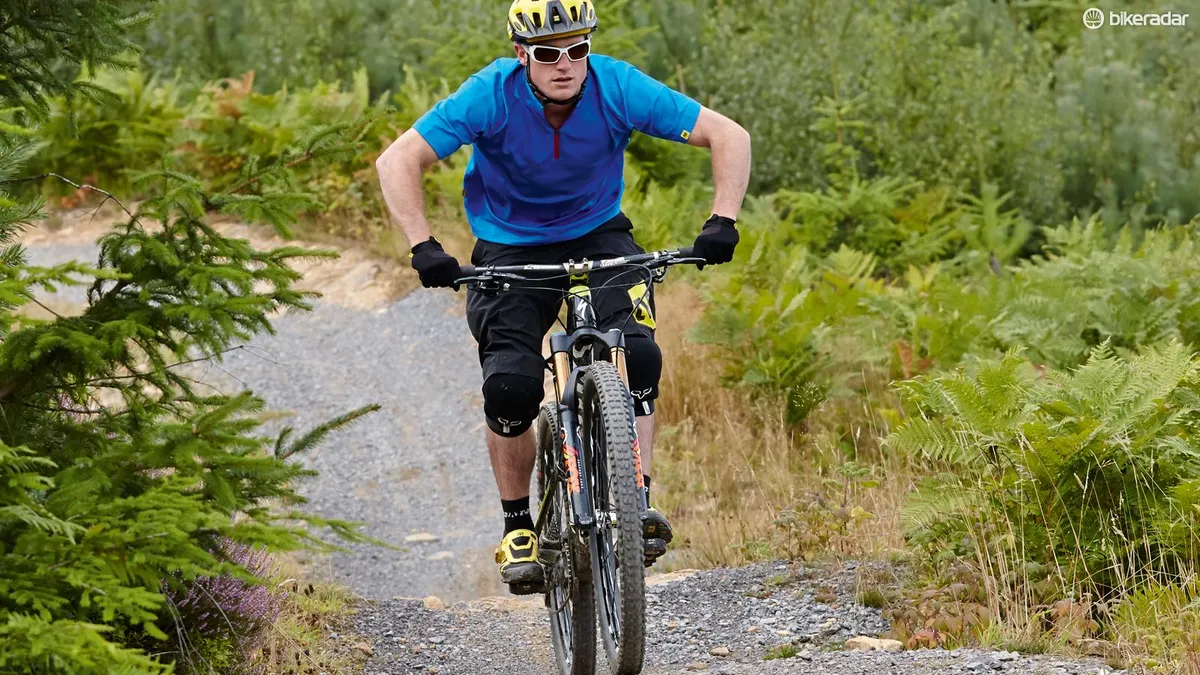
If you’re tackling a series of bumps, allow your legs and arms to bend again so you can absorb the upslope of the next bump. You’ll know if your timing is out because you’ll start to lose speed.
5. Pump again, and exit
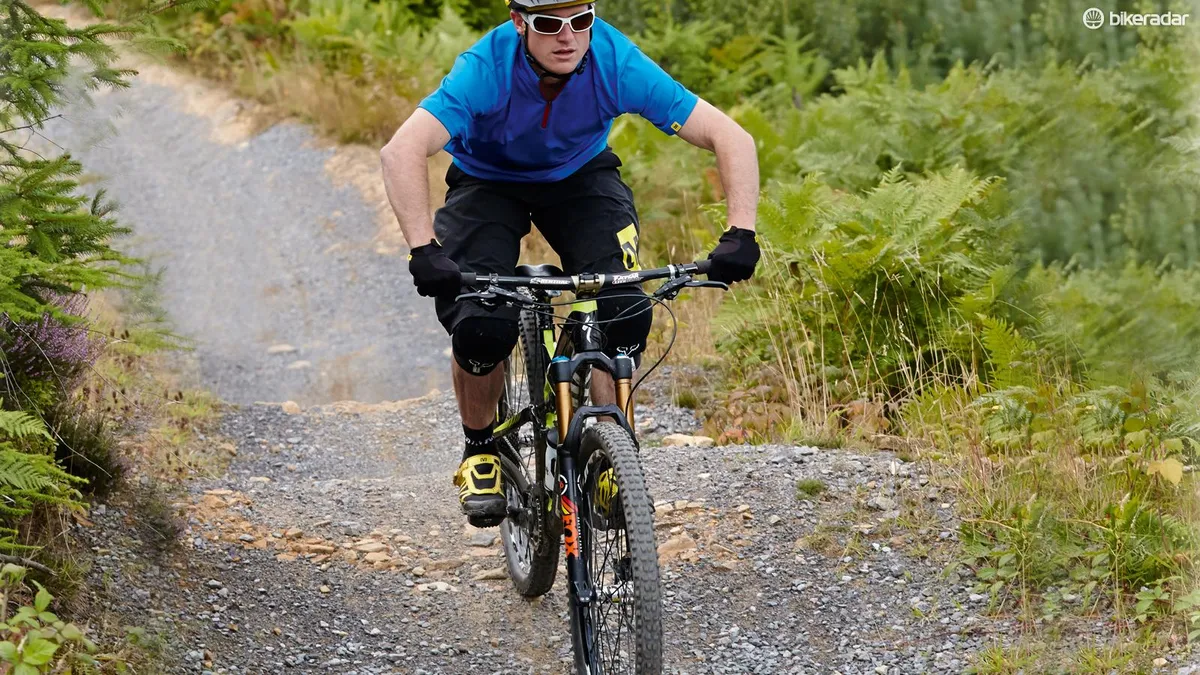
Once again, push hard with your legs into the downslope to generate as much speed as you can. Using your legs as much as possible will help you generate more speed as you power out of the section.
